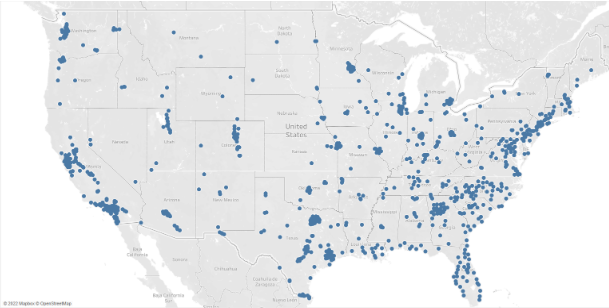 BACK TO MARKET SIGNALS
BACK TO MARKET SIGNALS
The Impact Core: The Domino Effect of Driving Change in Just 5% of US School Districts
The Center for Education Market Dynamics has identified 934 districts that represent an outsized percentage of K-12 students, especially the historically marginalized. Read to learn why focusing on these districts, identified as the Impact Core, is a strategic way to think about creating change.


The Center for Education Market Dynamics • June 09, 2023
For years, educators, policymakers, and mission-driven organizations have been focused on educational equity, but progress often feels slow and fragmented. With more than 18,000 districts in the United States consisting of 49.7 million students spread across all corners of the country, this comes as little surprise, as efforts to improve student outcomes often occur in a vacuum, confined to geographic and municipal borders. Ultimately, this translates into less impact, and less being done to help underserved students succeed.
Here at CEMD, we believe there’s a more strategic way to think about creating change, and that starts with focusing on a small set of districts we’ve identified as the Impact Core. Comprising just 5% of districts nationwide, the 934 districts that make up the Impact Core represent an outsized percentage of K-12 students, especially those who are historically marginalized.
Districts in the Impact Core represent:
- 52% of all students
- 64% of Black students
- 63% of Latino students
- 68% of multilingual learners
- 31% of Indigenous students
- 56% of economically disadvantaged students

Why Focus on Just 5% of US School Districts?
In an ideal world, educators and policymakers would be able to wave a magic wand and make the education system work better for everyone all at once, ensuring the prevalence of high-quality teaching and learning solutions nationwide. But if change must be iterative, it follows that we ought to consider where and how we target our initial efforts. In fact, CEMD research shows that by zeroing in on the Impact Core, we can effect change for as many as 50-60% of America’s students holistically. Focusing on 934 districts, instead of over 18,000, is a feasible short-term goal with the potential for a domino effect, creating long-term, widespread, and sustained impact.
What Next?
Driving change within Impact Core districts, and ultimately, the rest of the United States, requires cultivating a better understanding of the biggest challenges those districts are facing and how they are trying to solve them. Here are some key questions that policymakers and education leaders might ask themselves as they create strategies for promoting educational equity within the Impact Core:
- What solutions for student success are these districts already investing in and why?
- What aren’t they investing in?
- To what extent are their efforts working, and where are they falling short?
Explore CEMD’s online library that includes articles, blogs, case studies, videos, and more for additional resources to help increase student outcomes.

